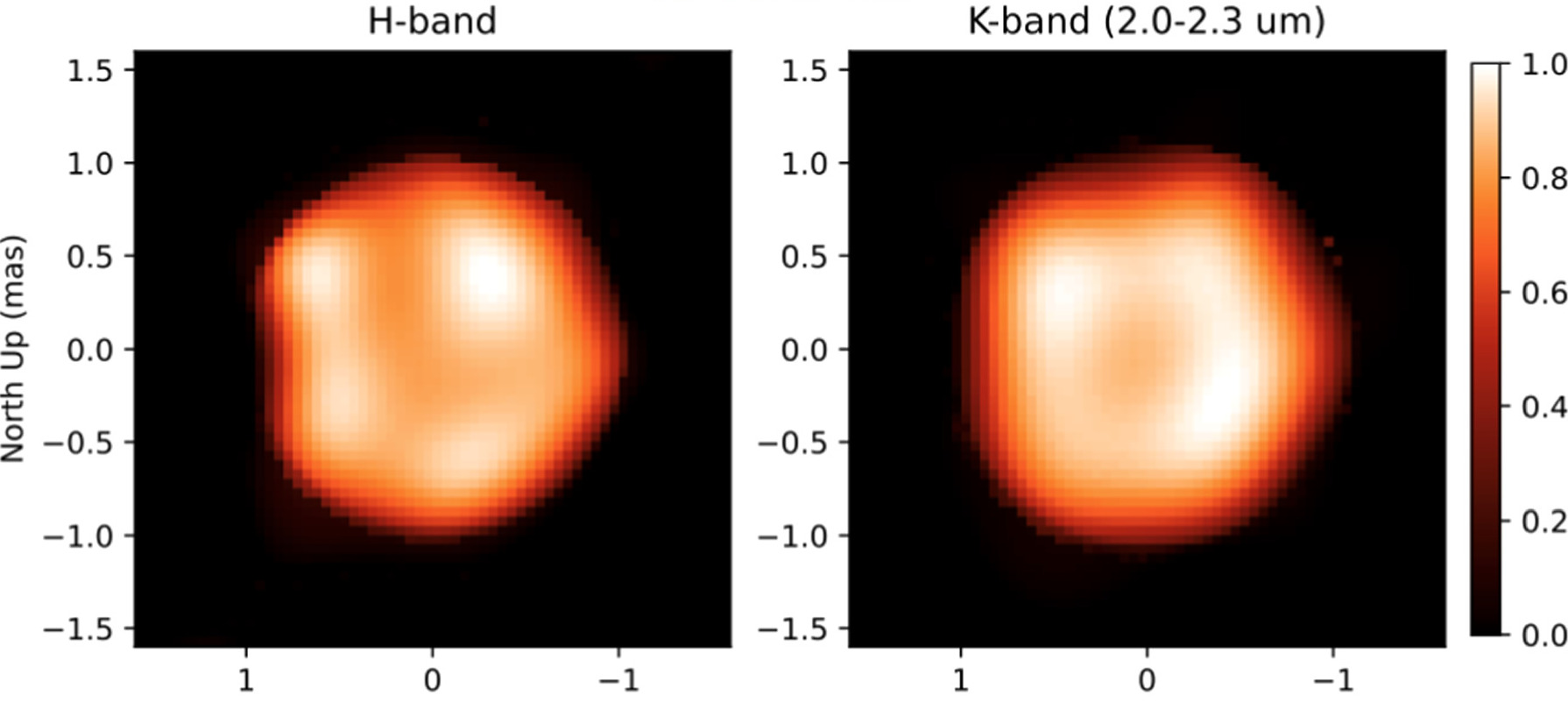
Massive evolved stars such as red supergiants and hypergiants are potential progenitors of Type II supernovae, and they are known for ejecting substantial amounts of matter, up to half their initial mass, during their final evolutionary phases. The rate and mechanism of this mass loss play a crucial role in determining their ultimate fate and the likelihood of their progression to supernovae.
The famous yellow hypergiant, ρ Cassiopeiae was imaged using the CHARA Array in the near-infrared H (left) and K-band (right) wavelengths. ρ Cas is well known for its recurrent eruptions, characterized by periods of visual dimming (∼1.5–2 mag) followed by recovery. The image reconstructions unveiled the presence of giant hot and cold spots on the stellar surface. We interpret these prominent hot spots as giant convection cells, suggesting a possible connection to mass ejections from the star's envelope.
Reference:
CHARA Near-Infrared Imaging of the Yellow Hypergiant Star rho Cassiopeiae: Convection Cells and Circumstellar Envelope
Anugu, N. et al., 2024, Astrophysical Journal, 974, 113



